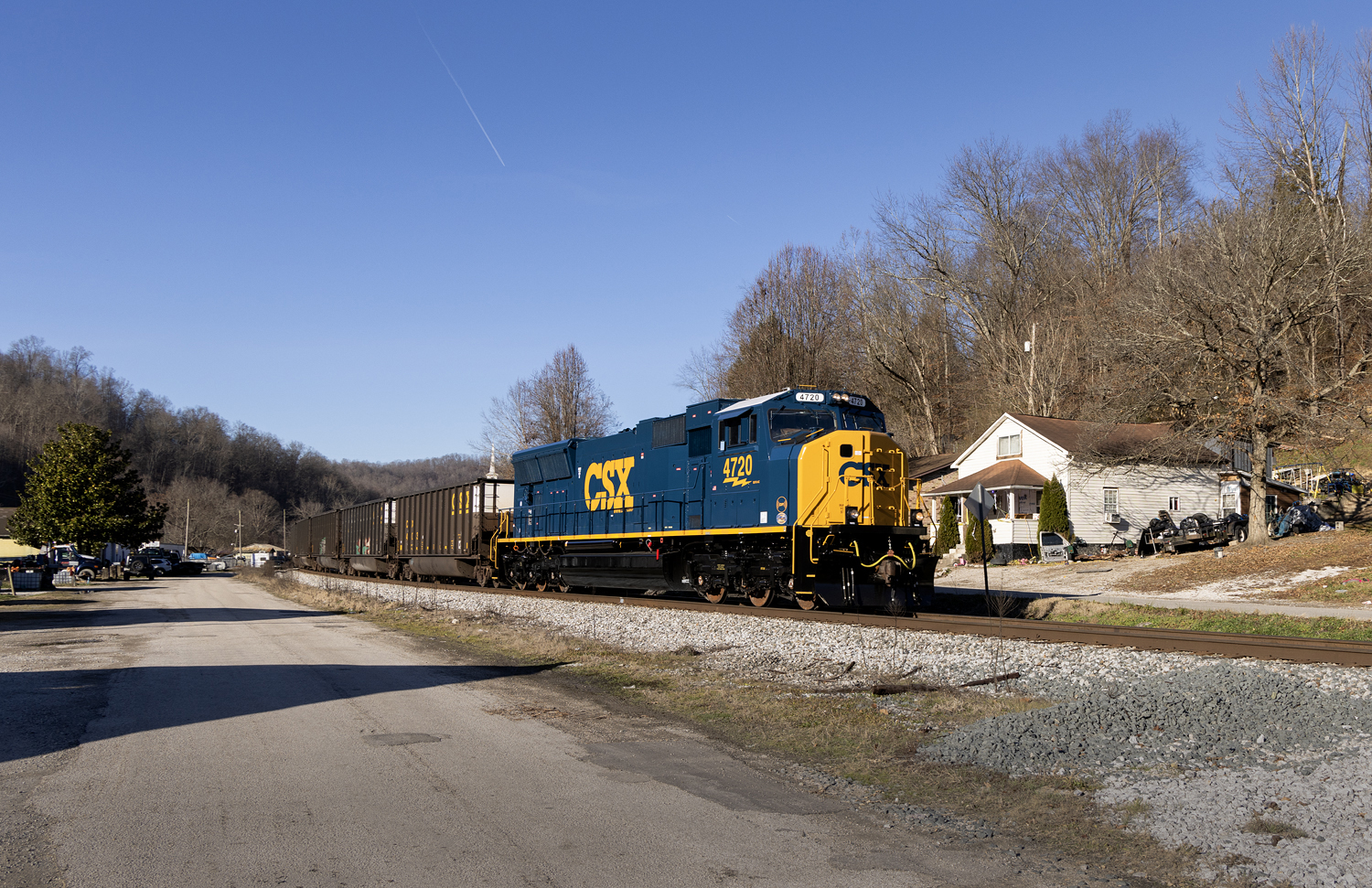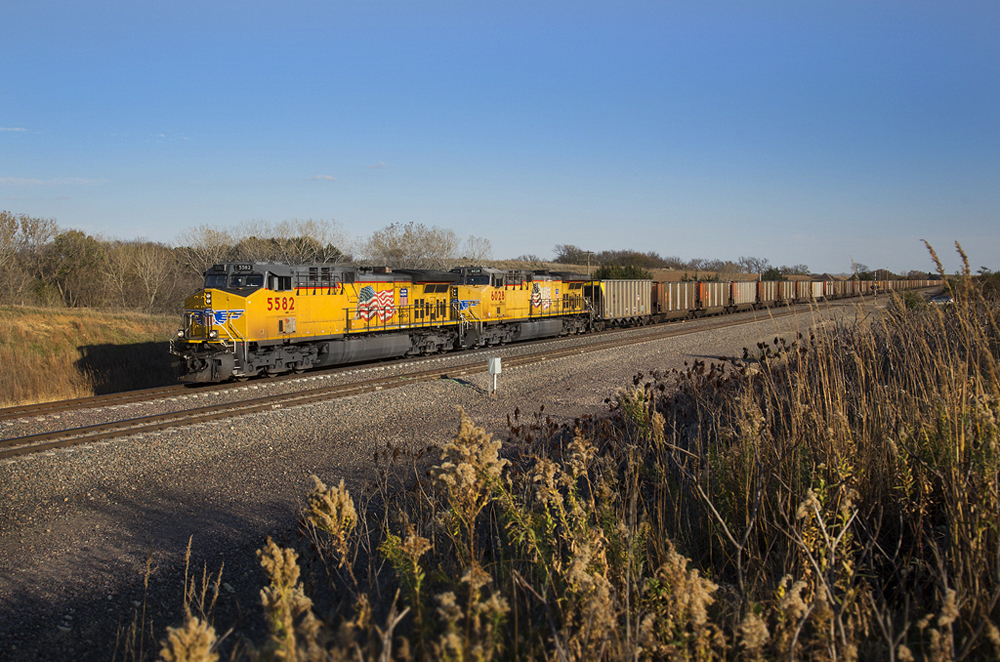
CHARLESTON, W.Va. — CSX Transportation is on pace to have the second largest coal franchise by revenue and volume among its Class I peers by the end of 2024, surpassing Union Pacific, and trailing only BNSF Railway.
CSX moved 367,000 carloads through the second quarter compared to UP’s 335,000 carloads, as the Omaha-based railroad’s coal business declined 20% in the second quarter compared to last year. BNSF is still on top, moving 549,000 coal carloads, and Norfolk Southern is fourth at 347,000 carloads, according to recent second-quarter data.
The 2024 run rate, a calculation dividing the weeks already completed in a year, then multiplying by 52, suggests a full-year projection of almost 674,400 coal carloads at CSX compared to 616,900 at UP, according to weekly railcar data through the 31 weeks ending Aug. 5.
This formulation doesn’t factor in business deals that could happen at either railroad, coal’s seasonality, or other outliers skewing year-over year-comparisons, such as the lengthy closure of the CSX-served export coal facilities in Baltimore in late March [see “Coal exports resuming through port of Baltimore,” Trains News Wire, May 22, 2024].
Prior to the most recent figures, CSX already had the second-most revenue generating coal program, despite moving fewer coal carloads than UP in 2023.
UP finished 2023 raking in $1.91 billion in coal revenue on 867,00 carloads, for an average revenue per carload of $2,211. CSX finished 2023 with $2.48 billion in coal revenues on 755,000 carloads for an average revenue per carload of $3,290. Because CSX’s revenue per carload averaged higher than UP, the Jacksonville, Fla.,-based railroad generated more money on fewer carloads. NS finished last year earning $1.71 billion in coal revenue on 677,000 carloads at an average revenue per carload of $2,530.
The variance in revenue per carload is partially because Powder River Basin’s thermal coal, the mainstay of BNSF and UP’s coal business, is cheaper to mine, less expensive to transport, and of a lower quality compared to higher grades of metallurgical coal found in Appalachia on CSX and NS. Metallurgical coal, used in steelmaking, is more expensive to purchase, and coal originating from Appalachia is typically more expensive to mine and transport due to its rural locale, compared to the west.
Historically, BNSF and UP have moved the most coal among their peers because of their access to low-cost PRB coal and rail connectivity to coal-fired power plants on each railroads’ major networks. Steep declines in coal-fired power generation means fewer tons of PRB coal originating on these railroads, a decline UP has been grappling with for years.

BNSF’s coal business has also declined in recent years, but remains a behemoth at 1.46 million carloads and $3.79 billion in 2023.
CSX and NS haven’t avoided coal headwinds. Each railroad has felt the effects of softer domestic coal demand due to coal plants idling or converting to natural gas, but eastern railroads, along with their customers, have maneuvered their coal business into export and metallurgical markets thanks in part to proximity.
Appalachia coal is closer to CSX and NS-served seaborne coal facilities along the East and Gulf coasts compared to PRB coal originating on BNSF and UP in Wyoming.
There is less coal export capacity on the West Coast compared to the Gulf of Mexico and the East. For example, through the first three months of 2024, all Pacific Coast facilities combined handled less than 2 million coal tons compared to Atlantic Coast facilities processing more than 18 million tons and Gulf Coast ports handling more than 6 million tons.
While some seaborne PRB coals move west for export, the lion’s share move by rail to the Mississippi River for transloading into barges, then is handled again in the Gulf for transloading into ocean vessels. Extra handling, plus the longer rail haul, adds costs compared to eastern rail-direct coal mines less than 400 miles from the Atlantic Ocean, or Alabama coal that is less than 300 miles from Mobile, Ala.
Once the cornerstone of volume and revenue for all big U.S. railroads, coal business in America and throughout the World continues evolving and with it comes a shift in how railroads take care of its oldest friend — coal.














“While some seaborne PRB coals move west for export, the lion’s share move by rail to the Mississippi River for transloading into barges, then is handled again in the Gulf for transloading into ocean vessels.”
This statement is incorrect. Most PRB coal is exported via Roberts Bank B.C.,
Exactly. The only “transloading” coal out of the PRB going to the Mississippi River that I’m aware of is that destined to the Cook coal terminal near Metropolis, Illinois (actually on the Ohio River), and this is subbituminous (lower sulfur) coal is being distributed to power plants in the area, mostly along the Ohio River.
The Port of New Orleans website says, “The Port of New Orleans exports coal to markets primarily in Asia and Europe. Most of the tonnage traveling through the Port of New Orleans originates in Central Appalachia and the Illinois Basin. It arrives at the mouth of the Mississippi River by barge before being loaded into larger ocean going vessels.” Same for the Port of Mobile, except its coal is mostly intrastate being mined in Alabama but also elsewhere via the Tennessee-Tombigbee Waterway.
The way I read the second paragraph, NS also passed UP. Thus NS should be third and UP fourth. What am I missing?
CSX moved 367,000 carloads through the second quarter compared to UP’s 335,000 carloads …. BNSF is still on top, moving 549,000 coal carloads, and Norfolk Southern is fourth at 347,000 carloads, according to recent second-quarter data.
Carloads yes! However, what about revenue ton miles? if RR A moves X cars M miles and RR B moves X cars 2M miles are the profits equal? NO!